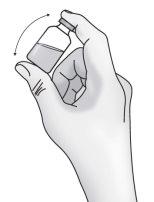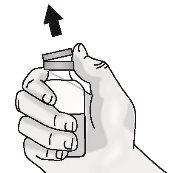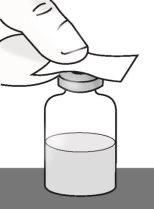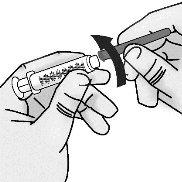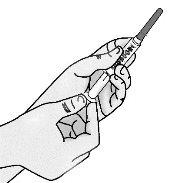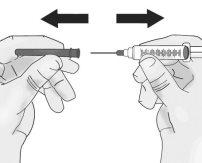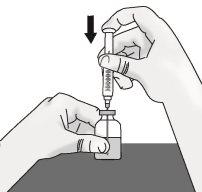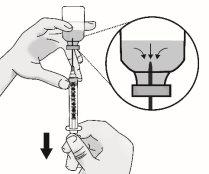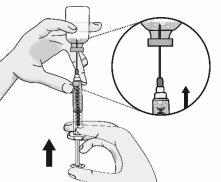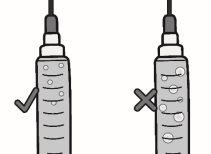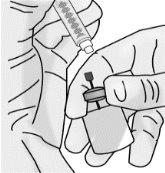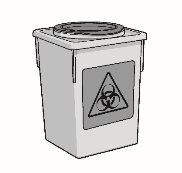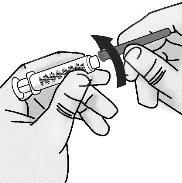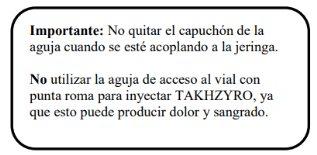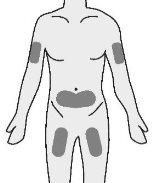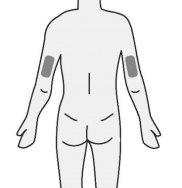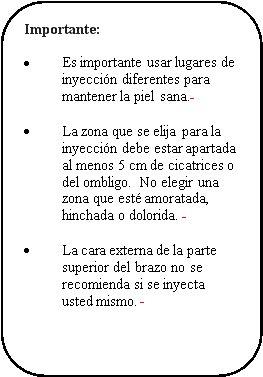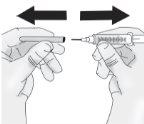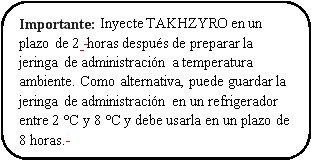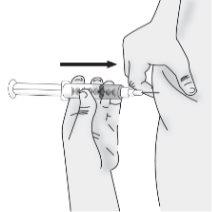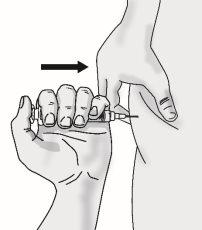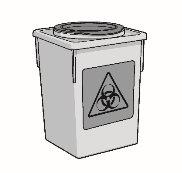
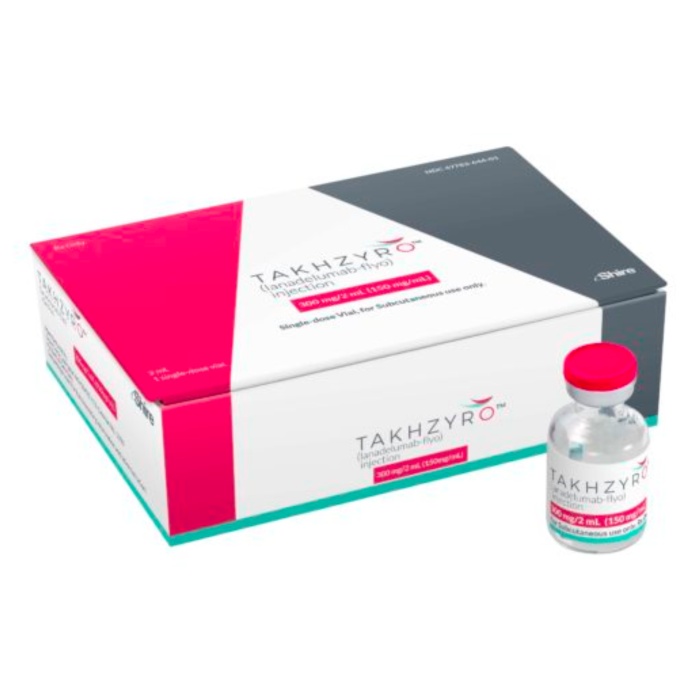
TAKHZYRO 300 mg INJECTABLE SOLUTION


How to use TAKHZYRO 300 mg INJECTABLE SOLUTION
Introduction
Package Leaflet: Information for the User
TAKHZYRO300mg solution for injection in vial
lanadelumab
Read all of this leaflet carefully before you start using this medicine because it contains important information for you.
- Keep this leaflet, you may need to read it again.
- If you have any further questions, ask your doctor, pharmacist, or nurse.
- This medicine has been prescribed for you only. Do not pass it on to others. It may harm them, even if their signs of illness are the same as yours.
- If you get any side effects, talk to your doctor, pharmacist, or nurse. This includes any possible side effects not listed in this leaflet. See section 4.
Contents of the pack
- What is TAKHZYRO and what is it used for
- What you need to know before you use TAKHZYRO
- How to use TAKHZYRO
- Possible side effects
- Storage of TAKHZYRO
- Contents of the pack and other information
- Instructions for use
1. What is TAKHZYRO and what is it used for
TAKHZYRO contains the active substance lanadelumab.
What is TAKHZYRO used for
TAKHZYRO is a medicine used in patients from 2 years of age with hereditary angioedema (HAE) to prevent angioedema attacks.
What is hereditary angioedema (HAE)
HAE is a hereditary disease within the same family. When you have this disease, there is not enough of a protein called "C1 inhibitor" in the blood, or the C1 inhibitor does not work properly. This leads to an excess of "plasma kallikrein", which in turn produces higher levels of "bradykinin" in the bloodstream. Too much bradykinin causes HAE symptoms, such as swelling and pain in:
- the hands and feet
- the face, eyelids, lips, or tongue
- the vocal cords (larynx), which can make it difficult to breathe
- the genitals
How TAKHZYRO works
TAKHZYRO is a type of protein that blocks the activity of plasma kallikrein, which helps to reduce the amount of bradykinin present in the bloodstream and prevents HAE symptoms.
2. What you need to know before you use TAKHZYRO
Do not use TAKHZYRO
If you are allergic to lanadelumab or any of the other ingredients of this medicine (listed in section 6).
Warnings and precautions
- Talk to your doctor, pharmacist, or nurse before starting to use TAKHZYRO.
- If you have a severe allergic reaction to TAKHZYRO with symptoms such as rash, chest tightness, wheezing, or rapid heartbeat, tell your doctor, pharmacist, or nurse immediately.
Keep a record
It is strongly recommended that each time you are given a dose of TAKHZYRO, you note the name and batch number of the medicine, so that you have a record of the batches used.
Lab tests
Tell your doctor if you are using TAKHZYRO before undergoing lab tests to evaluate your blood clotting, as the presence of TAKHZYRO in the blood may interfere with certain lab tests and lead to inaccurate results.
Children and adolescents
TAKHZYRO is not recommended for use in children under 2 years of age, as it has not been studied in this age group.
Other medicines and TAKHZYRO
Tell your doctor or pharmacist if you are taking, have recently taken, or might take any other medicines.
It is not known whether TAKHZYRO affects other medicines or is affected by other medicines.
Pregnancy and breastfeeding
If you are pregnant or breastfeeding, think you may be pregnant, or are planning to have a baby, ask your doctor or pharmacist for advice before using TAKHZYRO. Information on the safety of using TAKHZYRO during pregnancy and breastfeeding is limited. As a precaution, it is recommended to avoid using lanadelumab during pregnancy and breastfeeding. Your doctor will discuss with you the risks and benefits of receiving this medicine.
Driving and using machines
This medicine has no or negligible influence on the ability to drive and use machines.
TAKHZYRO contains sodium
This medicine contains less than 1 mmol of sodium (23 mg) per vial, which is essentially "sodium-free".
3. How to use TAKHZYRO
TAKHZYRO comes in single-use vials as a ready-to-use solution. A doctor with experience in treating patients with HAE will start and supervise your treatment.
Follow the instructions for administration of the medicine contained in this leaflet or as directed by your doctor, pharmacist, or nurse. If you have any doubts or other questions about the use of this medicine, ask your doctor, pharmacist, or nurse.
How much TAKHZYRO to use
For adults and adolescents from 12 years to less than 18 years of age:
- The recommended starting dose is 300 mg of lanadelumab every 2 weeks. If you have not had any attacks for a long period, your doctor may change your dose to 300 mg of lanadelumab every 4 weeks, especially if your body weight is low.
- In patients with a body weight below 40 kg, a starting dose of 150 mg of lanadelumab every 2 weeks may also be considered. If you have not had any attacks for a long period, your doctor may change your dose to 150 mg of lanadelumab every 4 weeks.
For children from 2 years to less than 12 years of age, the recommended starting dose is based on body weight:
Body weight (kg) | Recommended starting dose | Dose adjustment |
10 to less than 20 kg | 150 mg of lanadelumab every 4 weeks | A dose increase to 150 mg of lanadelumab every 3 weeks may be considered in patients with insufficient control of attacks |
20 to less than 40 kg | 150 mg of lanadelumab every 2 weeks | A dose reduction to 150 mg of lanadelumab every 4 weeks may be considered in stable patients without attacks under treatment |
40 kg or more | 300 mg of lanadelumab every 2 weeks | A dose reduction to 300 mg of lanadelumab every 4 weeks may be considered in stable patients without attacks under treatment |
- In patients with a body weight of 20 to less than 40 kg who have not had any attacks for a long period, the doctor may allow your child to continue receiving the same dose when they reach 12 years of age.
How to inject TAKHZYRO
If you self-inject TAKHZYRO or if it is injected by your caregiver, you or your caregiver must read and follow the instructions in section 7, "Instructions for use" carefully.
- TAKHZYRO is injected under the skin ("subcutaneous injection").
- The injection can be given by you or a caregiver in patients from 12 years of age.
- The injection can be given by a healthcare professional or by a caregiver in patients from 2 years to less than 12 years of age.
- A doctor, pharmacist, or nurse should teach you how to prepare and inject TAKHZYRO correctly before you use it for the first time. Do not inject yourself or inject someone else until you have been taught how to inject the medicine.
- Insert the needle into the fatty tissue of the stomach (abdomen), thigh, or upper arm.
- Inject the medicine into a different place each time.
- Use each vial of TAKHZYRO only once.
If you use more TAKHZYRO than you should
Tell your doctor, pharmacist, or nurse if you have been given a dose of TAKHZYRO that is higher than recommended.
If you forget to use TAKHZYRO
If you miss a dose of TAKHZYRO, inject the dose as soon as possible. The administration of subsequent doses may require an adjustment according to the desired dosing frequency, making sure to:
- wait at least 10 days between doses in patients with a dosing regimen every 2 weeks,
- wait at least 17 days between doses in patients with a dosing regimen every 3 weeks,
- wait at least 24 days between doses in patients with a dosing regimen every 4 weeks.
If you are not sure when to inject TAKHZYRO after missing a dose, ask your doctor, pharmacist, or nurse.
If you stop treatment with TAKHZYRO
It is important that you keep injecting TAKHZYRO as your doctor has told you, even if you feel better.
If you have any other questions about the use of this medicine, ask your doctor, pharmacist, or nurse.
4. Possible side effects
Like all medicines, this medicine can cause side effects, although not everybody gets them.
If you have a severe allergic reaction to TAKHZYRO with symptoms such as rash, chest tightness, wheezing, or rapid heartbeat, tell your doctor, pharmacist, or nurse immediately.
Tell your doctor, pharmacist, or nurse if you notice any of the following side effects.
Very common (may affect more than 1 in 10 people):
- Reactions at the injection site: symptoms are pain, redness of the skin, bruising, discomfort, swelling, bleeding, itching, hardening of the skin, tingling, warmth, and rash.
Common (may affect up to 1 in 10 people):
- Allergic reactions, such as itching, discomfort, and tingling in the tongue
- Dizziness, feeling of fainting
- Raised rash
- Muscle pain
- Lab test results showing changes in the liver
Reporting of side effects
If you get any side effects, talk to your doctor, pharmacist, or nurse. This includes any possible side effects not listed in this leaflet. You can also report side effects directly via the national reporting system listed in Appendix V. By reporting side effects, you can help provide more information on the safety of this medicine.
5. Storage of TAKHZYRO
Keep this medicine out of the sight and reach of children.
Do not use this medicine after the expiry date which is stated on the label and carton after EXP. The expiry date is the last day of the month stated.
Store in a refrigerator (between 2°C and 8°C). Do not freeze. Keep the vial in the outer packaging to protect it from light.
The vials can be stored below 25°C for a single period of 14 days but without exceeding the expiry date.
After storage at room temperature, do not refrigerate TAKHZYRO again for storage.
Do not use this medicine if you notice signs of deterioration, such as particles in the vial or a change in the color of the injection solution.
Medicines should not be disposed of via wastewater or household waste. Ask your pharmacist how to dispose of medicines no longer required. This will help protect the environment.
6. Container Contents and Additional Information
TAKHZYRO Composition
- The active ingredient is lanadelumab. Each vial contains 300 mg of lanadelumab in 2 ml solution.
- The other components are disodium phosphate dihydrate, citric acid monohydrate, histidine, sodium chloride, polysorbate 80, and water for injectable preparations; see section 2 "TAKHZYRO contains sodium".
Product Appearance and Container Contents
TAKHZYRO is presented as a clear, colorless to pale yellow injectable solution in a glass vial.
TAKHZYRO is available as a single-unit package that contains a 2 ml vial and as multiple packages that contain 2 or 6 intermediate boxes, each with 1 vial.
Not all pack sizes may be marketed.
Each package also contains the following components:
- A 3 ml empty syringe
- A 18-gauge vial access needle with a blunt tip
- A 27 G x 13 mm injection needle with a sharp tip
Marketing Authorization Holder and Manufacturer
Marketing Authorization Holder
Takeda Pharmaceuticals International AG Ireland Branch
Block 2 Miesian Plaza
50-58 Baggot Street Lower
Dublin 2
D02 HW68
Ireland
Manufacturer
Takeda Pharmaceuticals International AG Ireland Branch
Block 2 Miesian Plaza
50-58 Baggot Street Lower
Dublin 2
D02 HW68
Ireland
Shire Pharmaceuticals Ireland Limited
Blocks 2 & 3 Miesian Plaza
50-58 Baggot Street Lower
Dublin 2
Ireland
You can request more information about this medicinal product by contacting the local representative of the marketing authorization holder:
Belgium/Belgique/Belgien Takeda Belgium NV Tel: +32 2 464 06 11 medinfoEMEA@takeda.com | Lithuania Takeda, UAB Tel: +370 521 09 070 medinfoEMEA@takeda.com |
| Luxembourg/Luxemburg Takeda Belgium NV Tel: +32 2 464 06 11 medinfoEMEA@takeda.com |
Czech Republic Takeda Pharmaceuticals Czech Republic s.r.o. Tel: +420 234 722 722 medinfoEMEA@takeda.com | Hungary Takeda Pharma Kft. Tel: +36 1 270 7030 medinfoEMEA@takeda.com |
Denmark Takeda Pharma A/S Tel: +45 46 77 10 10 medinfoEMEA@takeda.com | Malta Drugsales Ltd Tel: +356 21419070 safety@drugsalesltd.com |
Germany Takeda GmbH Tel: +49 (0)800 825 3325 medinfoEMEA@takeda.com | Netherlands Takeda Nederland B.V. Tel: +31 20 203 5492 medinfoEMEA@takeda.com |
Estonia Takeda Pharma OÜ Tel: +372 6177 669 medinfoEMEA@takeda.com | Norway Takeda AS Tel: +47 800 800 30 medinfoEMEA@takeda.com |
Greece Τakeda ΕΛΛΑΣ Α.Ε. Tel: +30 210 6387800 medinfoEMEA@takeda.com | Austria Takeda Pharma Ges.m.b.H. Tel: +43 (0) 800-20 80 50 medinfoEMEA@takeda.com |
Spain Takeda Farmacéutica España, S.A. Tel: +34 917 90 42 22 medinfoEMEA@takeda.com | Poland Takeda Pharma Sp. z o.o. Tel: +48223062447 medinfoEMEA@takeda.com |
France Takeda France SAS Tel: + 33 1 40 67 33 00 medinfoEMEA@takeda.com | Portugal Takeda Farmacêuticos Portugal, Lda. Tel: + 351 21 120 1457 medinfoEMEA@takeda.com |
Croatia Takeda Pharmaceuticals Croatia d.o.o. Tel: +385 1 377 88 96 medinfoEMEA@takeda.com | Romania Takeda Pharmaceuticals SRL Tel: +40 21 335 03 91 medinfoEMEA@takeda.com |
Ireland Takeda Products Ireland Ltd Tel: 1800 937 970 medinfoEMEA@takeda.com | Slovenia Takeda Pharmaceuticals farmacevtska družba d.o.o. Tel: + 386 (0) 59 082 480 medinfoEMEA@takeda.com |
Iceland Vistor ehf. Tel: +354 535 7000 medinfoEMEA@takeda.com | Slovakia Takeda Pharmaceuticals Slovakia s.r.o. Tel: +421 (2) 20 602 600 medinfoEMEA@takeda.com |
Italy Takeda Italia S.p.A. Tel: +39 06 502601 medinfoEMEA@takeda.com | Finland Takeda Oy Tel: 0800 774 051 medinfoEMEA@takeda.com |
Cyprus Proton Medical (Cyprus) Ltd Tel: +357 22866000 admin@protoncy.com | Sweden Takeda Pharma AB Tel: 020 795 079 medinfoEMEA@takeda.com |
Latvia Takeda Latvia SIA Tel: +371 67840082 medinfoEMEA@takeda.com | United Kingdom (Northern Ireland) Takeda UK Ltd Tel: +44 (0) 3333 000 181 medinfoEMEA@takeda.com |
Date of the Last Revision of this Leaflet:
Other Sources of Information
Detailed information on this medicinal product is available on the European Medicines Agency website: https://www.ema.europa.eu. There are also links to other websites on rare diseases and orphan medicines.
- Instructions for Use
Make sure to read, understand, and follow the step-by-step instructions for injecting TAKHZYRO. Contact your doctor, pharmacist, or nurse if you have questions.
In addition to the vial, each TAKHZYRO package also contains:
|
|
This is used to withdraw the solution from the vial to the syringe. |
|
This is used for subcutaneous injection. |
|
Use only the syringes, vial access needles with blunt tips, and injection needles with sharp tips that come in this package or that your doctor has prescribed.
Use the syringes, vial access needles with blunt tips, and injection needles with sharp tips only once. Place all used syringes and needles in a puncture-proof container.
Do not use a syringe, vial access needle with a blunt tip, or injection needle with a sharp tip that appears to be damaged.
You will also need:
- Alcohol swabs
- A puncture-proof container for used vials, needles, and syringes
You can obtain these items from your doctor, pharmacist, or nurse.
The injection of TAKHZYRO can be summarized in 5 steps:
- Preparation of the TAKHZYRO vial
- Attaching the vial access needle with a blunt tip to the syringe
- Transferring TAKHZYRO to the syringe and changing to the injection needle with a sharp tip
- Selection and preparation of the injection site
- Injection of TAKHZYRO
Step 1: Preparation of the TAKHZYRO vial
|
|
|
|
|
|
Step 2: Attaching the vial access needle with a blunt tip to the syringe
|
|
|
|
|
|
Step 3: Transferring TAKHZYRO to the syringe and changing to the injection needle with a sharp tip
|
|
|
|
|
Slowly press the plunger, allowing the air to return to the vial until the solution reaches the top of the syringe. Repeat these steps until the large air bubbles have been eliminated. |
|
Put the syringe back in a vertical position. |
|
|
|
|
Step 4: Selection and Preparation of the Injection Site
|
|
Step 5: Injection of TAKHZYRO
|
|
|
|
|
|
|
|
- Country of registration
- Active substance
- Prescription requiredYes
- Manufacturer
- CompositionFOSFATO DISODICO DIHIDRATADO HIDROGENADO (10,6 mg mg), CLORURO DE SODIO (10,6 mg mg)
- This information is for reference only and does not constitute medical advice. Always consult a licensed doctor before taking any medication. Oladoctor is not responsible for medical decisions based on this content.
- Alternatives to TAKHZYRO 300 mg INJECTABLE SOLUTIONDosage form: INJECTABLE, 150 mgActive substance: lanadelumabManufacturer: Takeda Pharmaceuticals International Ag Ireland BranchPrescription requiredDosage form: INJECTABLE, 300 mgActive substance: lanadelumabManufacturer: Takeda Pharmaceuticals International Ag Ireland BranchPrescription requiredDosage form: INJECTABLE, 1500 IUActive substance: c1-inhibitor, plasma derivedManufacturer: Csl Behring GmbhPrescription required






